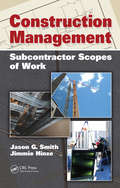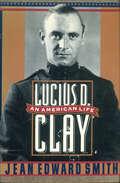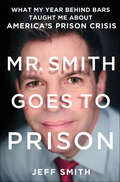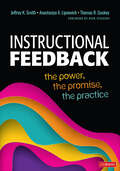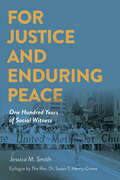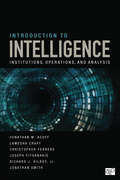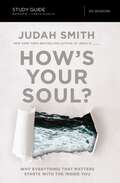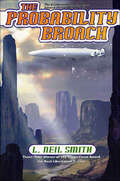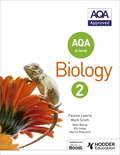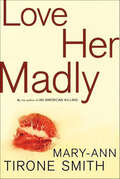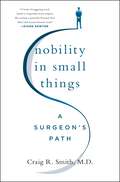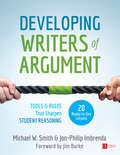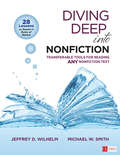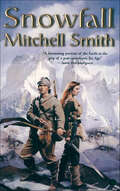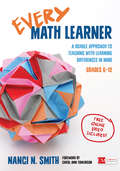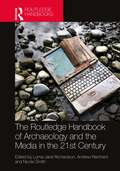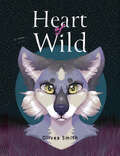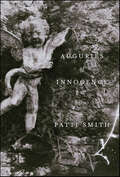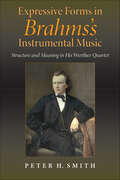- Table View
- List View
Construction Management: Subcontractor Scopes of Work
by Jason G Smith Jimmie HinzeConstruction projects are usually completed through the efforts of several specialty contractors that enter into performance agreements with the prime contractor. Mistakes, whether made while bidding or when executing a construction project, can be costly for the facility owner, general contractor, or subcontractor. Focused on helping the project team avoid these mistakes and run their projects more efficiently, this book describes how a prime contractor can coordinate the efforts of subcontractors and address common problems that can occur during various stages. Greater understanding of problematic aspects can assure that the full scope of the project is covered without redundancy.
Lucius D. Clay: An American Life
by Jean Edward SmithSoldier, statesman, logistical genius: Lucius D. Clay was one of that generation of giants who dedicated their lives to the service of this country, acting with ironclad integrity and selflessness to win a global war and secure a lasting peace. A member of the Army's elite Corps of Engineers, he was tapped by FDR in 1940 to head up a crash program of airport construction and then, in 1942, Roosevelt named him to run wartime military procurement. For three years, Clay oversaw the requirements of an eight-million-man army, setting priorities, negotiating contracts, monitoring production schedules and R&D, coordinating military Lend-Lease, disposing of surplus property-all without a breath of scandal. It was an unprecedented job performed to Clay's rigorous high standards. As Eliot Janeway wrote: "No appointment was more strategic or more fortunate."If, as head of military procurement, Clay was in effect the nation's economic czar, his job as Military Governor of a devastated Germany was, as John J. McCloy has phrased it, "the nearest thing to a Roman proconsulship the modern world afforded." In 1945, Germany was in ruins, its political and legal structures a shambles, its leadership suspect. Clay had to deal with everything from de-Nazification to quarrelsome allies, from feeding a starving people to processing vast numbers of homeless and displaced. Above all, he had to convince a doubting American public and a hostile State Department that German recovery was essential to the stability of Europe. In doing so, he was to clash repeatedly with Marshall, Kennan, Bohlen, and Dulles not only on how to treat the Germans but also on how to deal with the Russians. In 1949, Clay stepped down as Military Governor of Germany and Commander of U.S. Forces in Europe. He left behind a country well on the way to full recovery. And if Germany is today both a bulwark of stability and an economic and political success story, much of the credit is due to Clay and his driving vision.Lucius Clay went on to play key roles in business and politics, advising and working with presidents of both parties and putting his enormous organizing skills and reputation to good use on behalf of his country, whether he was helping run Eisenhower's 1952 campaign, heading up the federal highway program, raising the ransom money for the Bay of Pigs prisoners, or boosting morale in Berlin in the face of the Wall. The Berliners in turn never forgot their debt to Clay. At the foot of his West Point grave, they placed a simple stone tablet: Wir Danken Dem Bewahrer Unserer Freiheit- We Thank the Defender of Our Freedom.
Mr. Smith Goes to Prison: What My Year Behind Bars Taught Me About America's Prison Crisis
by Jeff SmithThe fall from politico to prisoner isn't necessarily long, but the landing, as Missouri State Senator Jeff Smith learned, is a hard one.In 2009, Smith pleaded guilty to a seemingly minor charge of campaign malfeasance and earned himself a year and one day in Kentucky's FCI Manchester. Mr. Smith Goes to Prison is the fish-out-of-water story of his time in the big house; of the people he met there and the things he learned: how to escape the attentions of fellow inmate Cornbread and his friends in the Aryan Brotherhood; what constitutes a prison car and who's allowed to ride in yours; how to bend and break the rules, whether you're a prisoner or an officer. And throughout his sentence, the young Senator tracked the greatest crime of all: the deliberate waste of untapped human potential. Smith saw the power of millions of inmates harnessed as a source of renewable energy for America's prison-industrial complex, a system that aims to build better criminals instead of better citizens. In Mr. Smith Goes to Prison, he traces the cracks in America's prison walls, exposing the shortcomings of a racially-based cycle of poverty and crime that sets inmates up to fail. Speaking from inside experience, he offers practical solutions to jailbreak the nation from the financially crushing grip of its own prisons and to jumpstart the rehabilitation of the millions living behind bars.
Instructional Feedback: The Power, the Promise, the Practice
by Jeffrey K. Smith Thomas R. Guskey Anastasiya A. LipnevichImplement evidence-based feedback practices that move learners forward Feedback is essential to successful instruction and improved student performance, but learners often dread and dismiss feedback and its effectiveness can vary. Thus, sharing intentions, clarifying success criteria, knowing what type of feedback to provide and when, and activating students as owners of their learning are essential feedback functions. Instructional Feedback presents a comprehensive summary of the most recent research on instructional feedback and describes its successful implementation. With a focus on evidence-based approaches adapted to specific contexts, the authors use common classroom situations to demystify feedback and place it within a broad instructional context, along with definitions, characteristics, and precautions about its effect on students’ emotions and behaviors. Inside you’ll find: Coverage of all grades and concentrations, including math, language arts, music, art, and science Peer feedback, self-assessment, and subject-specific nuances Student and teacher examples of feedback and suggestions for improvement Engaging and concise, Instructional Feedback discusses why feedback is so powerful, how it is promising, and what it looks like in practice.
Instructional Feedback: The Power, the Promise, the Practice
by Jeffrey K. Smith Thomas R. Guskey Anastasiya A. LipnevichImplement evidence-based feedback practices that move learners forward Feedback is essential to successful instruction and improved student performance, but learners often dread and dismiss feedback and its effectiveness can vary. Thus, sharing intentions, clarifying success criteria, knowing what type of feedback to provide and when, and activating students as owners of their learning are essential feedback functions. Instructional Feedback presents a comprehensive summary of the most recent research on instructional feedback and describes its successful implementation. With a focus on evidence-based approaches adapted to specific contexts, the authors use common classroom situations to demystify feedback and place it within a broad instructional context, along with definitions, characteristics, and precautions about its effect on students’ emotions and behaviors. Inside you’ll find: Coverage of all grades and concentrations, including math, language arts, music, art, and science Peer feedback, self-assessment, and subject-specific nuances Student and teacher examples of feedback and suggestions for improvement Engaging and concise, Instructional Feedback discusses why feedback is so powerful, how it is promising, and what it looks like in practice.
For Justice and Enduring Peace: One Hundred Years of Social Witness
by Jessica Mitchell SmithA look at the Methodist tradition of social witness.Since the beginning of the Methodist movement, “Methodists” have spoken to the issues of the day as an expression of the Wesleyan commitment to social holiness. The General Board of Church and Society upholds the Wesleyan commitment to social holiness through witnessing to just social policies and practices. This 100-year commemorative book will utilize archival materials from the agency’s historic publications to tell the story.
Introduction to Intelligence: Institutions, Operations, and Analysis
by Jonathan Smith Jonathan M. Acuff Richard J. Kilroy Joseph Fitsanakis Lamesha Craft Christopher J. FerreroIntroduction to Intelligence: Institutions, Operations, and Analysis offers a strategic, international, and comparative approach to covering intelligence organizations and domestic security issues. Written by multiple authors, each chapter draws on the author′s professional and scholarly expertise in the subject matter. As a core text for an introductory survey course in intelligence, this text provides readers with a comprehensive introduction to intelligence, including institutions and processes, collection, communications, and common analytic methods.
Introduction to Intelligence: Institutions, Operations, and Analysis
by Jonathan Smith Jonathan M. Acuff Richard J. Kilroy Joseph Fitsanakis Lamesha Craft Christopher J. FerreroIntroduction to Intelligence: Institutions, Operations, and Analysis offers a strategic, international, and comparative approach to covering intelligence organizations and domestic security issues. Written by multiple authors, each chapter draws on the author′s professional and scholarly expertise in the subject matter. As a core text for an introductory survey course in intelligence, this text provides readers with a comprehensive introduction to intelligence, including institutions and processes, collection, communications, and common analytic methods.
How's Your Soul? Bible Study Guide: Why Everything that Matters Starts with the Inside You
by Judah SmithIn this six-session video Bible study (DVD/digital video sold separately), Judah Smith, bestselling author of Jesus Is_____, will help you and your group find peace of mind and lasting fulfillment by asking a different kind of question. Because he knows that the health of the soul is too often overlooked in the busyness of everyday life, Judah trades the typical and surface-level "How are you?" for the question that gets to the heart of the matter: How's your soul?In the rush of living moment to moment, many of us find ourselves simply surviving, struggling daily with frustration, restlessness, boredom, and the rush to find ever-fleeting joy. But when we pause, we find the things that matter most in life are rooted in the health of the soul. Each of the six sessions asks us to deepen our exploration of what Judah calls the "inside you."When Is My Soul Home?What Makes My Soul Healthy?Why Does My Soul Have Hope?Who Does My Soul Hold On To?How Is My Soul Helped?Where Is My Soul Headed?This is an invitation to find lasting satisfaction by bringing your feelings into alignment with God's truth, moving beyond surviving to thriving, and learning how to live each day with eternal significance.The How&’s Your Soul Study Guide includes video discussion questions, Bible exploration, and personal study and reflection materials for in-between sessions.Designed for use with How&’s Your Soul Video Study 9780310083887 (sold separately).
The Probability Broach
by L. Neil SmithDenver detective Win Bear, on the trail of a murderer, discovers much more than a killer. He accidentally stumbles upon the probability broach, a portal to a myriad of worlds--some wildly different from, others disconcertingly similar to our own. Win finds himself transported to an alternate Earth where Congress is in Colorado, everyone carries a gun, there are gorillas in the Senate, and public services are controlled by private businesses.At the Publisher's request, this title is being sold without Digital Rights Management Software (DRM) applied.
AQA A Level Biology Student Book 2
by Mark Smith Pauline LowrieExam Board: AQALevel: AS/A-levelSubject: BiologyFirst Teaching: September 2015First Exam: June 2017Develop students' experimental, analytical and evaluation skills with contemporary and topical biology examples, practical assessment guidance and differentiated end of topic questions, with this AQA Year 2 student book.- Provides support for all 12 required practicals with plenty of activities and data analysis guidance- Develops understanding with engaging and contemporary examples to help students apply their knowledge, analyse data and evaluate findings- Gives detailed guidance and examples of method with a dedicated 'Maths in Biology' chapter and mathematical support throughout to consolidate learning- Offers regular opportunities to test understanding with Test Yourself Questions, Differentiated End of Topic Questions and Stretch and Challenge Questions- Supports exam preparation with synoptic questions, revision tips and skills-Develops understanding with free online access to 'Test yourself' answers and an extended glossary.
AQA A Level Biology Student Book 2
by Mark Smith Pauline LowrieExam Board: AQALevel: AS/A-levelSubject: BiologyFirst Teaching: September 2015First Exam: June 2017Develop students' experimental, analytical and evaluation skills with contemporary and topical biology examples, practical assessment guidance and differentiated end of topic questions, with this AQA Year 2 student book.- Provides support for all 12 required practicals with plenty of activities and data analysis guidance- Develops understanding with engaging and contemporary examples to help students apply their knowledge, analyse data and evaluate findings- Gives detailed guidance and examples of method with a dedicated 'Maths in Biology' chapter and mathematical support throughout to consolidate learning- Offers regular opportunities to test understanding with Test Yourself Questions, Differentiated End of Topic Questions and Stretch and Challenge Questions- Supports exam preparation with synoptic questions, revision tips and skills-Develops understanding with free online access to 'Test yourself' answers and an extended glossary.
Love Her Madly: A Novel (The Poppy Rice Mysteries #1)
by Mary-Ann Tirone SmithA tense, death-row drama--meet brash FBI investigator Poppy Rice in Love Her Madly, the first of a winning new series by Mary-Ann Tirone SmithPoppy Rice is home in her D.C. apartment with very little furniture and lots of boxes she still hasn't unpacked after five years. It's three a.m. and she's suffering from her usual insomnia. While polishing her nails, she watches a tape of the CBS Evening News--Dan Rather is interviewing convicted ax-murderer Rona Leigh Glueck. In ten days, Rona Leigh will be the first woman executed in Texas since the Civil War. Poppy pauses the tape on a close-up of Rona Leigh's small, delicate hands. Okay, she thinks, so maybe it was a lightweight ax.Poppy digs out Rona Leigh's case file to find--along with the grisly crime-scene photos--a physician's testimony that glee, not muscle, gave her the strength to commit the crime. When her public defender asked the crime lab for help determining whether such a small woman could physically commit these murders, he was turned away for not filing the correct paperwork.With the reluctant support of her colleague and sometime lover, Joe Barnow, the relentless Poppy reopens the investigation to find out if Rona Leigh deserves to receive a certificate that will read: Death by Legal Homicide as Ordered by the State of Texas.Funny and fearless, Poppy Rice is just about unstoppable.
Nobility in Small Things: A Surgeon's Path
by Craig R. Smith M.D.His routine was the same every day for 38 years: up at 4:15, make a turkey-on-rye, drive the deserted Henry Hudson Parkway to the hospital, check the schedule, scrub, cut, reattach, save a life or two, repeat. Until March 2020, when the Covid-19 pandemic shut hospital surgeries all over the world.Craig Smith, M.D., Chairman of the Department of Surgery at Columbia Presbyterian Hospital, went from performing heart surgeries on patients both everyday and celebrated (he performed the quadruple bypass that saved Bill Clinton’s life in 2004) to sitting in his tomb-quiet office looking out at George Washington Bridge. And he started to write. His Covid emails were balm to the staffers and later became celebrated for Dr. Smith’s care and thought in his assessment of the work of the hospital–of any hospital.Nobility in Small Things not only takes us into the mind and soul of a surgeon with the ability to “play God” but into the heart of a man who chose a lifesaving career. The book introduces us to patients and peers, and moves from family-building and heartbreak at home, to the tragic suicide of two fellow M.D.s. Dr. Smith also writes vulnerably about his debilitating social anxiety and how he overcame it.Dr. Smith shows us not just the making of a surgeon in Nobility in Small Things, but the maintenance of one: the deep feeling and moral philosophy that anchor the daily miracles that define his profession.
Developing Writers of Argument: Tools and Rules That Sharpen Student Reasoning (Corwin Literacy)
by Michael W. Smith Jon-Philip ImbrendaThe ability to make effective arguments is not only necessary in students’ academic lives, it’s a transferable skill that’s essential to students’ future success as critical thinkers and contributing members of society. But in the here and now, how do we engage students and ensure they understand argument writing’s fundamental components? How do we take them from "Here’s what I think" to "Here’s what I think. Here’s what makes me think that. And here’s why it matters"? This stunning, full-color book by Michael Smith and Jon-Philip Imbrenda shows the way, with ready-to-implement lessons that make argument writing topical and relevant. Students are first asked to form arguments about subjects that matter to them, and then to reflect on the structure of those arguments, a process that provides learners with valuable, reusable structural models. Throughout the book, the authors provide helpful instructional tools, including Literary, nonfiction, and author-created simulated texts that inspire different points of view Essential questions to create a context that rewards argumentation Lessons introducing students to the three essential elements of an argument—claim, data, and warrant—and how to make each effective Questioning probes, semantic differential scales, and other innovative instructional approaches Samples of writing from the authors’ own students, and enlightening details on how this work informed the authors’ subsequent teaching approach Complete with guidance on applying the lessons’ techniques in a broader, unit-wide context, Developing Writers of Argument offers a practical approach for instructing students in this crucial aspect of their lifelong development.
Developing Writers of Argument: Tools and Rules That Sharpen Student Reasoning (Corwin Literacy)
by Michael W. Smith Jon-Philip ImbrendaThe ability to make effective arguments is not only necessary in students’ academic lives, it’s a transferable skill that’s essential to students’ future success as critical thinkers and contributing members of society. But in the here and now, how do we engage students and ensure they understand argument writing’s fundamental components? How do we take them from "Here’s what I think" to "Here’s what I think. Here’s what makes me think that. And here’s why it matters"? This stunning, full-color book by Michael Smith and Jon-Philip Imbrenda shows the way, with ready-to-implement lessons that make argument writing topical and relevant. Students are first asked to form arguments about subjects that matter to them, and then to reflect on the structure of those arguments, a process that provides learners with valuable, reusable structural models. Throughout the book, the authors provide helpful instructional tools, including Literary, nonfiction, and author-created simulated texts that inspire different points of view Essential questions to create a context that rewards argumentation Lessons introducing students to the three essential elements of an argument—claim, data, and warrant—and how to make each effective Questioning probes, semantic differential scales, and other innovative instructional approaches Samples of writing from the authors’ own students, and enlightening details on how this work informed the authors’ subsequent teaching approach Complete with guidance on applying the lessons’ techniques in a broader, unit-wide context, Developing Writers of Argument offers a practical approach for instructing students in this crucial aspect of their lifelong development.
Diving Deep Into Nonfiction, Grades 6-12: Transferable Tools for Reading ANY Nonfiction Text (Corwin Literacy)
by Michael W. Smith Jeffrey D. Wilhelm"General reading strategies and teacher-developed questions will only take our students so far—with our approach, students gain astounding independence because they engage directly with the nonfiction author, and with how that author used specific details (moves) and structures to communicate meanings and effects." —Wilhelm and Smith All nonfiction is a conversation between the writer and the reader, an invitation to agree or disagree with compelling and often provocative ideas about some aspect of the world we live in. At the end of the day, it’s our responsibility to decide if the argument is sound. With Diving Deep Into Nonfiction, Jeffrey D. Wilhelm and Michael W. Smith deliver a revolutionary teaching framework that helps students read well by noticing the rules and conventions of this dynamic exchange. The classroom-tested lessons include engaging short excerpts and teach students to be powerful readers who know both how authors signal what’s worth noticing in a text and how readers connect and make meaning of what they have noticed. No matter what they are reading, students learn to be on high alert, and highly curious about how texts work and what they mean, as they learn to notice direct statements of principle, calls to attention, ruptures, and readers’ rules of notice: Notice the topics and the textual conversation: Who is speaking and how might he or she be responding to another’s ideas? What is the idea that gives "heat" to this text? Notice key details: What attracts my attention? How does the author signal both direct and implicit statements of meaning? How does the author use the unexpected? How can I interpret patterns of key details to see overall meanings? Notice varied nonfiction genres: What are the essential features of this kind of text? How does the author employ them? What effects are they designed to have on the reader? Notice text structure: How does the author structure the text to connect details and ideas? What patterns of thought does the author use along the way? With Diving Deep Into Nonfiction, Wilhelm and Smith upend current practices, and it’s high time. Once your students engage with these lessons, you’ll never go back to the same old tired approach— and reading across content areas enters a whole new era.
Diving Deep Into Nonfiction, Grades 6-12: Transferable Tools for Reading ANY Nonfiction Text (Corwin Literacy)
by Michael W. Smith Jeffrey D. Wilhelm"General reading strategies and teacher-developed questions will only take our students so far—with our approach, students gain astounding independence because they engage directly with the nonfiction author, and with how that author used specific details (moves) and structures to communicate meanings and effects." —Wilhelm and Smith All nonfiction is a conversation between the writer and the reader, an invitation to agree or disagree with compelling and often provocative ideas about some aspect of the world we live in. At the end of the day, it’s our responsibility to decide if the argument is sound. With Diving Deep Into Nonfiction, Jeffrey D. Wilhelm and Michael W. Smith deliver a revolutionary teaching framework that helps students read well by noticing the rules and conventions of this dynamic exchange. The classroom-tested lessons include engaging short excerpts and teach students to be powerful readers who know both how authors signal what’s worth noticing in a text and how readers connect and make meaning of what they have noticed. No matter what they are reading, students learn to be on high alert, and highly curious about how texts work and what they mean, as they learn to notice direct statements of principle, calls to attention, ruptures, and readers’ rules of notice: Notice the topics and the textual conversation: Who is speaking and how might he or she be responding to another’s ideas? What is the idea that gives "heat" to this text? Notice key details: What attracts my attention? How does the author signal both direct and implicit statements of meaning? How does the author use the unexpected? How can I interpret patterns of key details to see overall meanings? Notice varied nonfiction genres: What are the essential features of this kind of text? How does the author employ them? What effects are they designed to have on the reader? Notice text structure: How does the author structure the text to connect details and ideas? What patterns of thought does the author use along the way? With Diving Deep Into Nonfiction, Wilhelm and Smith upend current practices, and it’s high time. Once your students engage with these lessons, you’ll never go back to the same old tired approach— and reading across content areas enters a whole new era.
Snowfall: Book Three Of The Snowfall Trilogy (The Snowfall Trilogy #3)
by Mitchell SmithSnowfall features another sharp-tongued, uncompromising heroine, Catania Olsen. She is the doctor for and spiritual guardian of a band of hunters who live at the edge of a great Wall of ice in what was once Colorado. In the country of the Trappers, books are hand-copied so that knowledge may be preserved, but the technology described in their precious pages is mostly lost to their fur-clad readers, despite Catania's attempts at scientific treatment and the Trappers' careful husbanding of ancient metal tools.As a resurgent population moves west and north from the more settled places that had once been the Eastern Seaboard and Gulf Coast of the United States, they drive tribesmen-Cree, Arapaho, and more-before them. On the run and desperate to find new homes, the tribes slaughter entire populations to claim their lands. The Trappers are innocent of this until Jack Monroe, banished years before for murdering a fellow Trapper, arrives, urging them to flee their ancestral home, the Trappers do not listen until nearly too late, until the first enemy arrows have found their marks.The southern flight of the surviving Trappers is a journey through time as well as space. From a frozen northland where summer lasts two chilly weeks through a burgeoning forest where the Trappers taste their first beef to a gulf coast where warm breezes carry exotic scents and sounds; from a primitive life of hunting and trapping to the luxurious Gardens, where people can still weave and make paper, to a bustling trade mart where man-beasts created by unnatural science tread the dirt streets, Catania is shocked to recognize that the proud Trappers have spent generations clinging to civilization with their fingernails. The journey into the warm lands will change Doctor Catania Olsen, mind, heart, and soul. She will gain and lose a love, see great wisdom and greater folly, witness amazing miracles and terrifying science, and, most surprising to herself, become a mother. Finally, she will have to choose between her people and her freedom. At the Publisher's request, this title is being sold without Digital Rights Management Software (DRM) applied.
Every Math Learner, Grades 6-12: A Doable Approach to Teaching With Learning Differences in Mind (Corwin Mathematics Series)
by Nanci N. SmithAs a secondary mathematics teacher, you know that students are different and learn differently. And yet, when students enter your classroom, you somehow must teach these unique individuals deep mathematics content using rigorous standards. The curriculum is vast and the stakes are high. Is differentiation really the answer? How can you make it work? Nationally recognized math differentiation expert Nanci Smith debunks the myths, revealing what differentiation is and isn’t. In this engaging book Smith reveals a practical approach to teaching for real learning differences. You’ll gain insights into an achievable, daily differentiation process for ALL students. Theory-lite and practice-heavy, this book shows how to maintain order and sanity while helping your students know, understand, and even enjoy doing mathematics. Classroom videos, teacher vignettes, ready-to-go lesson ideas and rich mathematics examples help you build a manageable framework of engaging, sense-making math. Busy secondary mathematics teachers, coaches, and teacher teams will learn to Provide practical structures for assessing how each of your students learns and processes mathematics concepts Design, implement, manage, and formatively assess and respond to learning in a differentiated classroom Plan specific, standards-aligned differentiated lessons, activities, and assessments Adjust current instructional materials and program resources to better meet students′ needs This book includes classroom videos, in-depth student work samples, student surveys, templates, before-and-after lesson demonstrations, examples of 5-day sequenced lessons, and a robust companion website with downloadables of all the tools in the books plus other resources for further planning. Every Math Learner, Grades 6-12 will help you know and understand your students as learners for daily differentiation that accelerates their mathematics comprehension. "This book is an excellent resource for teachers and administrators alike. It clearly explains key tenants of effective differentiation and through an interactive approach offers numerous practical examples of secondary mathematics differentiation. This book is a must read for any educator looking to reach all students." —Brad Weinhold, Ed.D., Assistant Principal, Overland High School
Every Math Learner, Grades 6-12: A Doable Approach to Teaching With Learning Differences in Mind (Corwin Mathematics Series)
by Nanci N. SmithAs a secondary mathematics teacher, you know that students are different and learn differently. And yet, when students enter your classroom, you somehow must teach these unique individuals deep mathematics content using rigorous standards. The curriculum is vast and the stakes are high. Is differentiation really the answer? How can you make it work? Nationally recognized math differentiation expert Nanci Smith debunks the myths, revealing what differentiation is and isn’t. In this engaging book Smith reveals a practical approach to teaching for real learning differences. You’ll gain insights into an achievable, daily differentiation process for ALL students. Theory-lite and practice-heavy, this book shows how to maintain order and sanity while helping your students know, understand, and even enjoy doing mathematics. Classroom videos, teacher vignettes, ready-to-go lesson ideas and rich mathematics examples help you build a manageable framework of engaging, sense-making math. Busy secondary mathematics teachers, coaches, and teacher teams will learn to Provide practical structures for assessing how each of your students learns and processes mathematics concepts Design, implement, manage, and formatively assess and respond to learning in a differentiated classroom Plan specific, standards-aligned differentiated lessons, activities, and assessments Adjust current instructional materials and program resources to better meet students′ needs This book includes classroom videos, in-depth student work samples, student surveys, templates, before-and-after lesson demonstrations, examples of 5-day sequenced lessons, and a robust companion website with downloadables of all the tools in the books plus other resources for further planning. Every Math Learner, Grades 6-12 will help you know and understand your students as learners for daily differentiation that accelerates their mathematics comprehension. "This book is an excellent resource for teachers and administrators alike. It clearly explains key tenants of effective differentiation and through an interactive approach offers numerous practical examples of secondary mathematics differentiation. This book is a must read for any educator looking to reach all students." —Brad Weinhold, Ed.D., Assistant Principal, Overland High School
The Routledge Handbook of Archaeology and the Media in the 21st Century
by Nicole Smith Andrew Reinhard Lorna-Jane RichardsonThe Routledge Handbook of Archaeology and the Media in the 21st Century presents diverse international perspectives on what it means to be an archaeologist and to conduct archaeological research in the age of digital and mobile media.This volume analyses the present‑day use of new and old media by professional and academic archaeology for leisure, academic study and/or public engagement, and attempts to provide a broad survey of the use of media in a wider global archaeological context. It features work on traditional paper media, radio, podcasting, film, television, contemporary art, photography, video games, mobile technology, 3D image capture, digitization and social media. Themes explored include archaeology and traditional media, archaeology in a digital age, archaeology in a post‑truth era and the future of archaeology. Such comprehensive coverage has not been seen before, and the focus on 21st‑century concerns and media consumption practices provides an innovative and original approach.The Routledge Handbook of Archaeology and the Media in the 21st Century updates the interdisciplinary field of media studies in archaeology and will appeal to students and researchers in multiple fields including contemporary, public, digital, and media archaeology, and heritage studies and management. Television and film producers, writers and presenters of cultural heritage will also benefit from the many entanglements shared here between archaeology and the contemporary media landscape.
Heart of Wild
by Olivea Smith“Here it was. The forest’s edge. No one had ever dared to set paw here.” When a young wolf named Minty is forced to leave his pack and everything he’s ever known, he must venture on an epic journey to find himself a new home and life, far from the wolves who haunt his past. As he travels through the new world evolving around him, he encounters many challenges, and becomes faced with the ultimate choice; return to the pack and rival his greatest enemy to save his pack, or continue running from his fears. Will he make it back home in time to save the ones he loves from a great evil, or will he leave them to face this threat themselves and carry on the life of a lone wolf? Come join the world of a wild wolf and discover a wilderness of both wonder and woe, as Minty embarks on a quest throughout the dark and mysterious forest, meeting new and dangerous challenges around every twist and turn.
Auguries of Innocence: Poems
by Patti SmithAuguries of Innocence is the first book of poetry from Patti Smith in more than a decade. It marks a major accomplishment from a poet and performer who has inscribed her vision of our world in powerful anthems, ballads, and lyrics. In this intimate and searing collection of poems, Smith joins in that great tradition of troubadours, journeymen, wordsmiths, and artists who respond to the world around them in fresh and original language. Her influences are eclectic and striking: Blake, Rimbaud, Picasso, Arbus, and Johnny Appleseed. Smith is an American original; her poems are oracles for our times.
Expressive Forms in Brahms's Instrumental Music: Structure and Meaning in His Werther Quartet (Musical Meaning and Interpretation)
by Peter H. Smith"This book is a substantial and timely contribution to Brahms studies. Its strategy is to focus on a single critical work, the C-Minor Piano Quartet, analyzing and interpreting it in great detail, but also using it as a stepping-stone to connect it to other central Brahms works in order to reach a new understanding of the composer's technical language and expressive intent. It is an original and worthy contribution on the music of a major composer." —Patrick McCrelessExpressive Forms in Brahms's Instrumental Music integrates a wide variety of analytical methods into a broader study of theoretical approaches, using a single work by Brahms as a case study. On the basis of his findings, Smith considers how Brahms's approach in this piano quartet informs analyses of similar works by Brahms as well as by Beethoven and Mozart.Musical Meaning and Interpretation—Robert S. Hatten, editor
